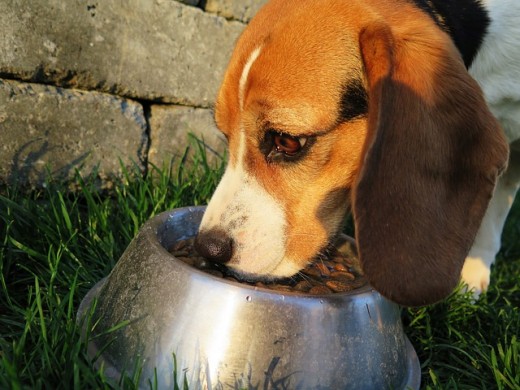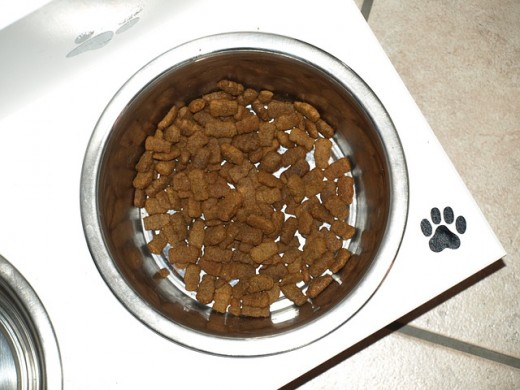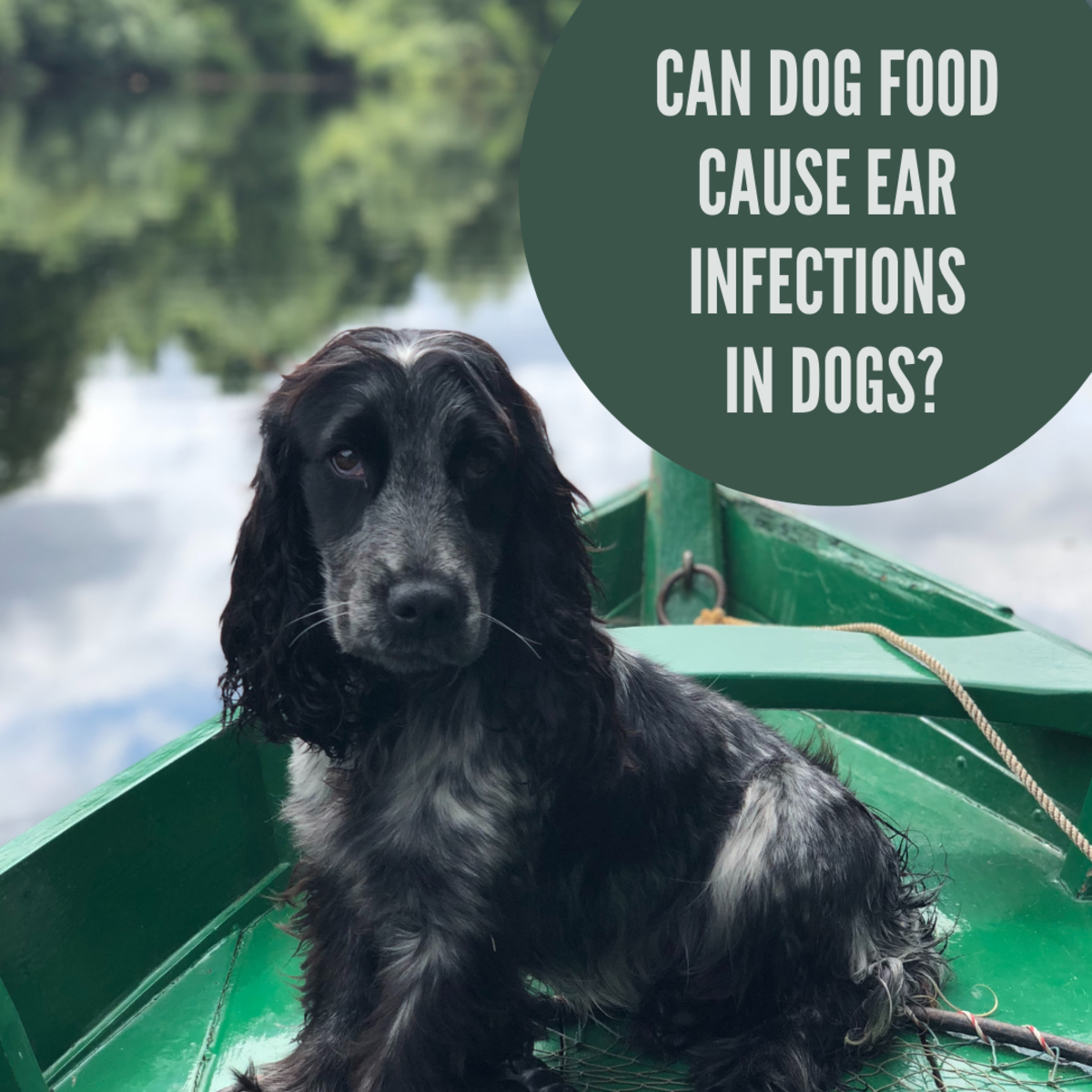Most Common Food Allergies in Dogs
Know the Signs of Dog Food Allergies

Food Allergies in Pets are Very Common
Food allergies are very common in dogs. Dogs can also be intolerant to certain foods. Food intolerance is diffferent from food allergies. Food allergies usually cause itchiness, and other allergic reactions. Food intolerance causes intestinal disturbances such as diarrhea, and vomiting,
A food allergy affects the dog’s immune system. Most often the allergy is caused by a protein particle that causes the reaction in the animal. Most food allergies present themselves as skin problems and/or gastrointestinal upsets. Some dogs can have chronic otitis (ear infections)
ast body’s immune system. It is usually always a protein particle in the food that is responsible for reactions.
Approximately 10% of all canine allergies are related to food, and could be the reason your dog scratches and itches themselves. Most food allergies are genetic. The more exposure a dog gets to the trigger of the allergen, the more likely the allergy will flair up. The most common food allergies include dairy, beef, wheat, chicken, egg, lamb, pork, soy, fish and rabbit, not necessarily in this order. Many dogs can be allergic to more than one food type. Dogs can become allergic due to many factors. The first being heredity, the environment, exposure to antibiotics which can cause intestingal changes inside their gut.
Dogs and Allergies

How Do You Know if Your Dog Has a Pet Food Allergy?
How do you know if your dog has a food allergy? Some symptoms include chronic recurrent ear inflammations, itchiness, skin problems, stomach problems, gas, itchy rear, licking their feet, yeast infections. Itchy skin on their feet, face, ears,and legs is a very common symptom of food allergies. If you notice hair loss, hot spots, skin infections that respond to antibiotics but come back after the antibiotics are stopped. Some breeds can show more of a predisposition to allergies than others. German Shepards, Golden Retrievers, Labrador Retrievers, Dachshunds, and Cocker Spaniels tend to have more food allergies than some of the other breeds. Food allergies affect females and males, whether they are neutered or not, and can show up anywhere between 5 months old and 12 years old. Inhalant allergies and flea bites are the only more common allergic reactions in pets.
Symptoms of a pet allergy:
- itchy skin
- bald patche
- rashes
- red patches
Very often the food you feed your pet is filled with processed proteins, fillers, and unnatural colorings. The immune system of the dog, may attack these ingredients ingested as a foreign substance. The more a dog is exposed to these products, the more likely they could develop an allergy.
How to tell if your pet could have a food allergy:
- Is your pet’s itchiness year round, not related to a seasonal issue
- no or little respone to cortisone to treat the skin ailments
- there is a pattern with the ay the lesions are distributed (common for food allergy)
- there were no skin problems before the age of four or five
.
Food allergies are best to be determined by using an elimination diet. This is done by completely changing the dog’s diet. Stop the food you are currently feeding your dog, and give them a food they have never had before. Your veterinarian can guide you as to the proper way to conduct this elimination diet.
Different Ingredients in Dog Food Can Cause Allergies

Elimination Diet
In order to achieve success with an elimination diet:
- Feed the special food exclusively, with absolutely no other treats, foods, or flavorings allowed.
- Let everyone know your dog is on a special diet, so they don’t accidentally give them something off their diet.
- Any treats given should be made of the same ingredients in this special diet
- All pets in the household need to be given the same food
Is Hypoallergenic Food Really Good

Hypoallergenic Pet Foods Can Be a Misleading Label
Some over the counter commercially sold food for dogs claim they are hypoallergenic or good for sensitive skin. Many of these products can be misleading to the consumer. Pet food companies are not required to list every ingredient that is in the food, as long as the ingredients meet the guaranteed analysis, one produ ct can be substituted for another. Some of these ingredients not listed could be the cause of the food allergy.
Your veterinarian is the best one to select the appropriate food to conduct an allergy test. Usually they will select a prescription diet, a low antigen diet, or a homemade diet. Prescription diets work well because the formulation never changes since they are created to treat medical conditions in the pet. The protein source is always the same, unlike commercially sold pet food. Prescription diets are only sold through veterinarians.
The protein(s) in a diet that can be responsible for food allergy signs are called antigens. Low antigen diets are also prescription diets. In these diets, the protein has been causeformulated (hydrolyzed) to be so small that it will not stimulate the immune system. The primary aim of a hydrolyzed protein diet is to disrupt the proteins within the diet sufficiently to remove existing allergens
Some of the current examples of these diets made by specific pet food companies are listed below.
Hill’s Diets:
Prescription diets:
D/D canned/dry- salmon & potato/rice
D/D canned/dry- duck & potato/rice
D/D canned/dry-venison &potato/rice
D/D dry – egg & rice
D/D canned-lamb & rice
Low Antigen diets:
Z/D Ultra Allergen Free dry and canned-hydrolyzed chicken and refined starch
Z/D Low Antigen –dry and canned-hydrolyzed chicken and single source carbohydrate (potato)
Purina Diets:
Low Antigen diets:
LA Limited Antigen dry-salmon and rice
HA hypoallergenic dry-hydrolyzed soy
Iams Diets:
Prescription diets:
Response FP dry and canned-fish and potato
Response KO dry-kangaroo, canola meal, and oat flour
Royal Canin:
Low Antigen diet:
Hypoallergenic HP 19 dry-hydrolyzed soy and rice
Prescription diets: (IVD)
Potato and Duck dry and canned-duck protein and potato (also has light formula)
Potato and Rabbit dry and canned- rabbit protein and potato
Potato and Venison dry and canned- venison protein and potato (has large breed formula-dry)
Potato and Whitefish dry and canned-whitefish protein and potato
While the food allergy test is going on, make sure you stay disciplined to the instructions your veterinarian gives you. It is a good idea to have frequent phone conversations or visits with the veterinarian so they can monitor your dog’s progress. Make sure you ask plenty of questions.
Dogs and the Right Food

Food Allergy and the Food Allergy Test
Although it is fairly simple for a veterinarian to determine that your dog had a food allergy, it is important that other issues are eliminated, and to make sure there are not other underlying health issues. There are some sensitivies that can mirror a food allergy such as flea bite allergies, parasites, inhalant allergies, sarcoptic mange, yeast and bacterial infections, and thyroid problems. When all the other causes are ruled out and treated, then you and your veterinarian can work on eliminating and correcting the food allergies.
A good way to go about working on the food allergy is to do food trials and elimination diet. A food trial involves feeding an animal a new, never before eaten food for 12 weeks. This food should be a protein and a carbohydrate like venison and rice. Food that says it has limited antigen or hydrolyzed protein may be a good choice during this 12 week period. Make sure your pet gets no treats, no rawhides, no biscuits, pig ears, or any flavored medication, no plastic toys, no cow hooves,or flavored toothpaste. Make sure your dog doesn’t have access to the cat litter or allow your dog to roam where they can eat something you are not aware of. Keep a journal to note if your dog ate something not on the special diet.
If there is no change after the 12 week period, and a food allergy is suspected, another food trial variation may be tried.
How to Figure Out What is Causing Your Dog's Allergy

It Takes Detective Work to Determine a Food Allergy in Your Dog
Food trials are the best way to determine food allergies. Blood tests are not believed to be an accurate way to diagnose food allergies. Skin testing works well for dog’s with inhalant allergies.
Once a food allergy is determined, the course of treatment involves avoidance. Short term relief can sometimes be helped with fatty acids. steroids, antihistamines. Eliminating the food that is causing the allergy is the best long term solution for your pet.
Detective Work Will Help You Determine a Food Allergy

Common Sources of Food Allergies in Dogs
80% of food allergies in dogs are caused by meat, dairy, wheat and fish, In addition, there are other foods that are responsible for the allergic reactions you see your dog suffering with
-
Meat is a very common cause of food allergies an Mainly beef and chicken are the offending ingredients.
-
Dairy Products can be caused by the lactose in the foods which can cause an allergic reaction or lactose intolerence.
-
Wheat Products are plentiful in commercial pet foods.
-
Fish may be another source that can trigger an allergy
-
Soy Products are also very common causes of allergies in dogs
-
Eggs can be another cause of allergies.
- Fruits such as apricots, and plums are other possible allergens
- Vegetables and corn can be a source of food allergy too.
- Fillers in dog food, the preservatives, and colorants can also be a cause of allergies.
It takes a while to build up an allergy to food, so allergic reactions are rarely seen before a dog is younger than 3 years old.
Healthier Dog Food Alternatives

Important Things to Remember About Dog Food Allergies
Important points to remember:
-
food allergies are not seasonal - the discomfort will be all year long
-
food allergies can occur in dogs of all ages, but usually not puppies
-
a dog will not have a reaction
-
the first time they are exposed to the ingredient
-
small red bumps, raised patches of skin, rash around back of the legs, the undersideir body, the ears, and the feet , licking their face, rubbing can be signs of a food allergy that affects the skin.
-
some dogs will have gastrointestinal disturbances such as vomiting, frequent bowel movements, and diarrhea
a special diet that takes approximately 12 weeks, with limited ingredients is the best test to determine if this is a food allergy.
Recognize the Symptoms of Food Allergies
It is important to recognize the symptoms of food allergies. Once you suspect a food allergy, it is best to get your dog on food that will alleviate the symptoms and provide a healthy, quality diet that your dog can enjoy forever.
- Dogology: Why are Dogs so Different in Shapes Sizes ...
Dogology: Lovable Dogs in Different Shapes Sizes Types Canines are all the same species but look so different: WHY? What’s in this article: · Dogs in all different sizes · All dogs have the same ancestor · History of the dog ·... - Dogology: Famous Dogs Paw Prints in Ancient...
Dogology: PawPrints in History Famous and Legendary Dogs in History Historic Moments and Dogs Were There (Part I) Around the globe and through the span of time humans and dogs have shared a history that can be traced back tens of thousands... - Dogology: Dog foods, Dog treats, and Dogs Care Nutr...
Choosing The Right Dog Food and Dog Treats It is important to read ingredients on the dog food and dog snacks you give your canine companion Choosing the best dog treats for your lovable pet is one... - Catology: Pet Nutrition Products and Protein for Yo...
Pet nutrition products are on the mind of just about every pet owner. About a third of households in the United States have cats. That translates to a lot of people buying a lot of cat food. It is important... - Petology: Pet Food Intelligence
There are many options to choose from when deciding which pet food you will feed your pet. Do you want your pet to dine on dry, wet, semi moist? Is holistic food or price of the pet food a...
© 2012 toknowinfo








